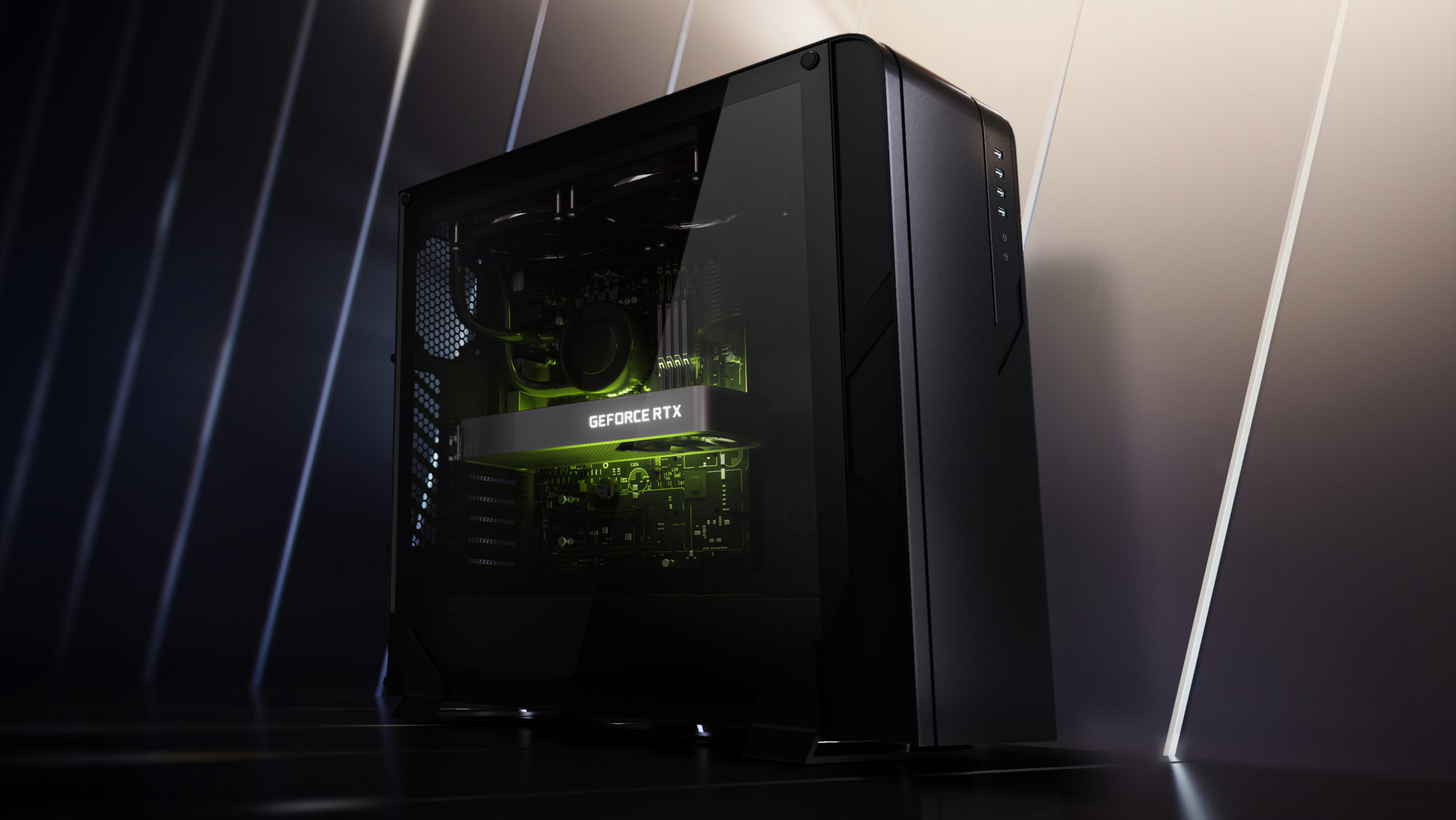Much to the surprise of no one, anywhere, Nvidia announced the GeForce RTX 3060 today during its not-technically-part-of-CES ‘special event.’ The RTX 3060 will be coming to desktops and laptops in February, and the desktop part at least will feature 12GB of GDDR6. Will it join the best graphics cards as the new mainstream favorite, and where will it place on our GPU benchmarks hierarchy? Nvidia didn’t provide too many details, but we expect it to land at roughly the performance of the outgoing RTX 2070 Super (maybe only RTX 2070).
The biggest news is perhaps the price. Nvidia says the card will launch at $329, which is less than the launch price of the RTX 2060 ($349). Whether you’ll be able to find a card at that price any time soon is a different story. Given the current GPU shortages, plus cryptocurrency surges, we fully expect the RTX 3060 to sell out quickly. Maybe we’ll end up pleasantly surprised, but don’t count on it.
The above image shows eight custom designs from Nvidia’s partners, including all the usual suspects. There’s no Founders Edition pictured, and the majority of 3060 cards will almost certainly be third party designs. However, Nvidia’s promotional material does show what appears to be a Founders Edition, and it did a 2060 FE as well.
Core specs weren’t revealed, but Nvidia did give performance data. 13 TFLOPS and 25 RT TFLOPS with 101 Tensor TFLOPS puts it about 20-25 percent below the RTX 3060 Ti. Rumors and leaks strongly suggest the RTX 3060 will use a new GA106 GPU, though we may see future variants based off harvested GA104 GPUs.
The GA106 will only have support for six GDDR6 memory channels. In a somewhat unusual twist, Nvidia has announced the card will have 12GB of GDDR6 memory. That’s 50 percent more memory than the RTX 3060 Ti and RTX 3070, and even surpasses the RTX 3080. There have been leaks suggesting 6GB cards are also in the works, but whether those will be for laptops only, or an RTX 3050 Ti, isn’t clear. There’s still a distinct possibility the RTX 3060 will end up like the GTX 1060, with two variants with different memory capacities. Let’s hope not, but … probably.
Rumored RTX 3060 Specs
Architecture: GA106
Process Technology: Samsung 8N
Transistors (Billion): 13.3?
Die size (mm^2): 300?
SMs: 28
GPU Cores: 3584
Tensor Cores: 112
RT Cores: 28
Base Clock (MHz): 1350?
Boost Clock (MHz): 1770?
VRAM Speed (Gbps): 16
VRAM (GB): 12
VRAM Bus Width (bits): 192
ROPs: 64
TMUs: 112
GFLOPS FP32 (Boost): 12.7
Tensor TFLOPS FP16 (Sparsity): 51 (101)
RT TFLOPS: 24.8
Bandwidth (GBps): 384
TDP (watts): 170
Launch Date: Feb 2021
Launch Price: $329
Of course, more memory doesn’t mean more memory bandwidth. Because Nvidia uses six 32-bit memory channels, the RTX 3060 will have a 192-bit memory interface. With 14Gbps GDDR6, that would give it the same 336 GBps of bandwidth as the RTX 2060, just with double the capacity. But there are rumors RTX 3060 could use 16Gbps memory, bumping it up to 384 GBps, which would be nice.
We’re actually very happy to see 12GB, even if it’s not absolutely necessary today, because plenty of games are already bumping into VRAM limits at 8GB, never mind 6GB. Whether the GPU will be fast enough to really use the additional capacity remains to be seen. In some games, the 12GB could actually put it close to the 3060 Ti, maybe even ahead of it, which would be a bit strange but not impossible.
We also expect Nvidia will launch updated RTX 30-series parts with double the VRAM of the existing GPUs at some point. Whether it’s called the RTX 3080 Ti, RTX 3080 Super, or RTX 3080 20GB (most likely the first), we should get higher VRAM configurations in the coming months. An RTX 3070 Ti with 16GB is also likely to show up. Those will inevitably cost more than the existing models, and considering the continuing GPU shortages it’s probably not a bad idea for Nvidia to wait a bit before announcing and launching those parts.
We’ll be back in February with the full review of the GeForce RTX 3060 12GB, to see how it stacks up against the rest of the current graphics card offerings. The price looks good, but then so do the other official prices on RTX 30-series cards. Let’s hope supply can start to match demand.
